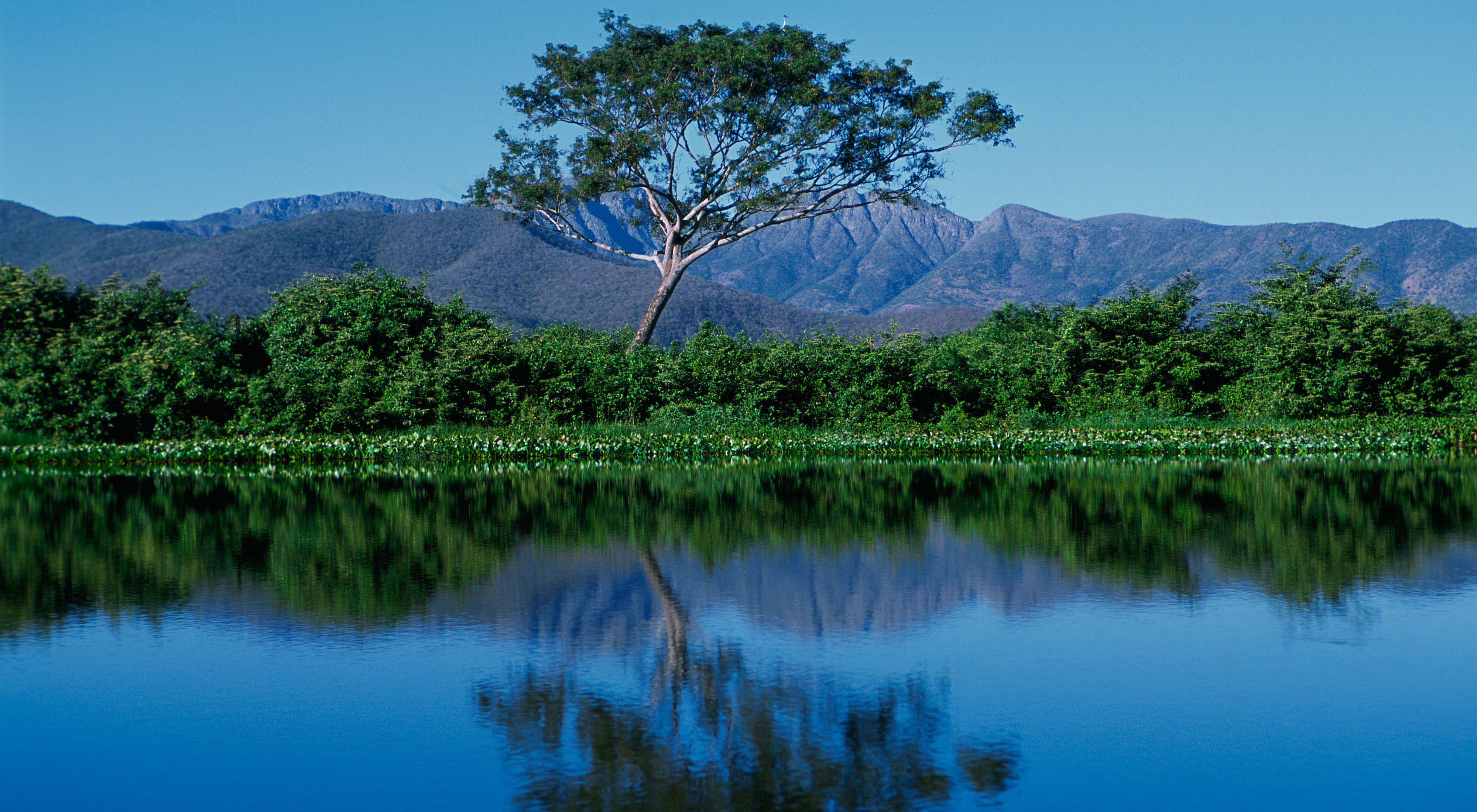Description
The Pantanal is the world’s largest freshwater wetland, a seasonally flooded plain fed by the tributaries of the Paraguay River. At 68,000 square miles, it is more than 20 times the size of the Everglades.
The Pantanal is also one of the world’s most productive habitats. Annual floods, fed by tropical rains, create a giant nursery for aquatic life, including 260 species of fish. As the waters recede in the dry season, the Pantanal attracts a great influx of birds and other animals — one of the hemisphere’s greatest natural phenomena.
Location: Located in the upper Paraguay River basin, the Pantanal straddles Brazil’s border with Bolivia and Paraguay. About 80 percent of the Pantanal is in Brazil.
Major Habitat Type: Flooded Grassland Savanna
Animals: The Pantanal attracts dense populations of animals that feed and breed along its waterways, including:
- Giant river otters
- Jaguars
- Marsh deer
- Tapirs
The wetland also provides habitat for more than 650 bird species, including cormorants, egrets, herons, hyacinth macaws, ibis, jabiru storks and roseate spoonbills.
Why the Conservancy Works Here
When compared to other wetlands in the world the Pantanal is still regarded as the most preserved yet, less than two percent is under federal protection. The strategic location of Pantanal makes it more vulnerable to the advance of large scale agriculture, cattle ranching, water pollution, dams and transport navigation, thereby increasing the pressure on the local habitats.
What the Conservancy Is Doing
Initially the Conservancy helped partner organization Ecotropica purchase 148,000 acres (60,000 hectares) of critical land on the borders of Pantanal National Park and converted these properties into private preserves. During the past decade the Conservancy has been playing an essential role in helping local institutions to assess, manage and monitor the Pantanal National Park.
More recently the Conservancy has established a valuable partnership with UNESCO, WWF and Brazilian environmental agency, IBAMA, for the conservation of the Natural World Heritage Sites in Pantanal. To guarantee the long-term sustainability of the Pantanal, the Conservancy has also launched the Great Rivers Partnership — a public-private partnership for restoring watersheds and influencing agriculture development.
The Conservancy recently opened an office in Cuiabá, in the Brazilian state of Mato Grosso, in order to better protect the Pantanal and Brazil’s Cerrado grasslands.
